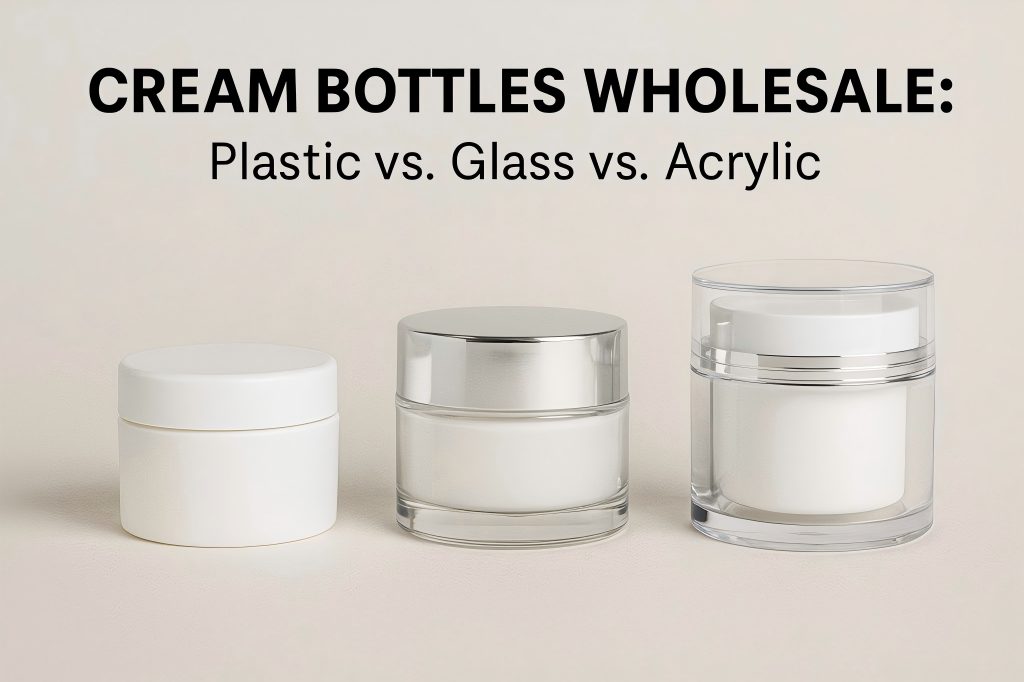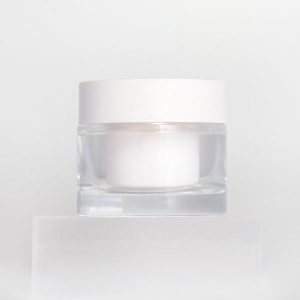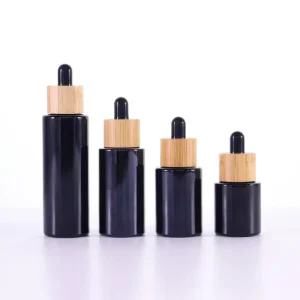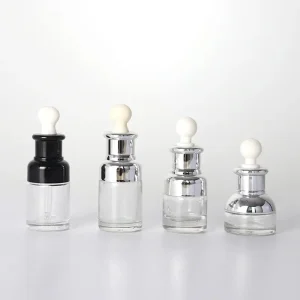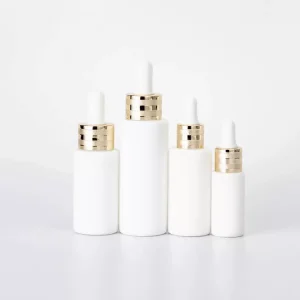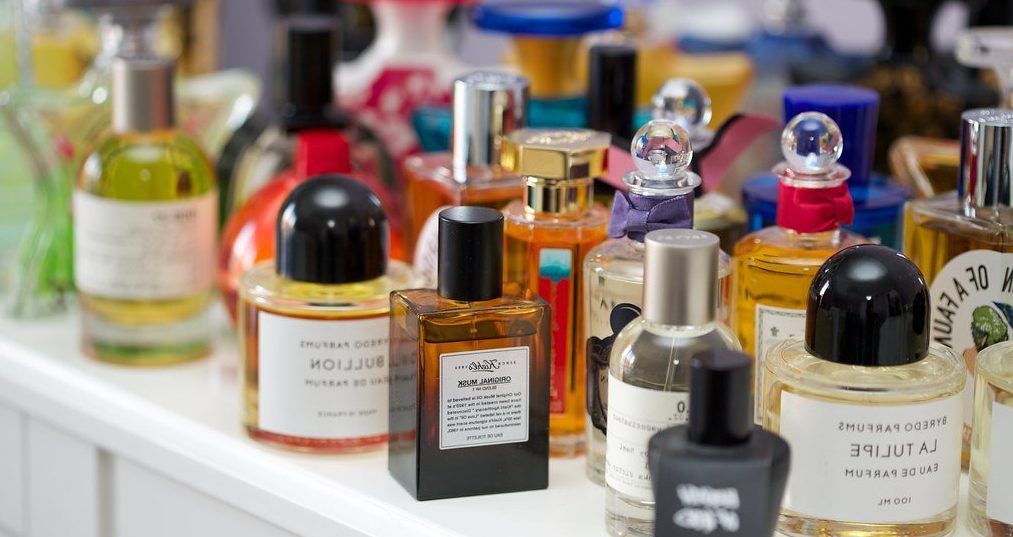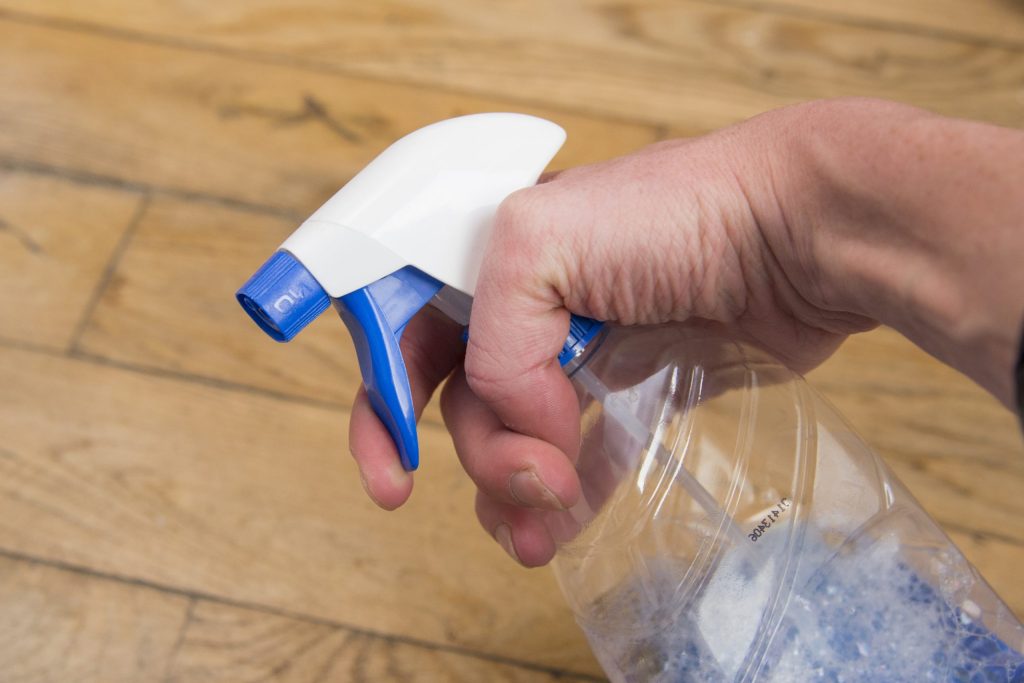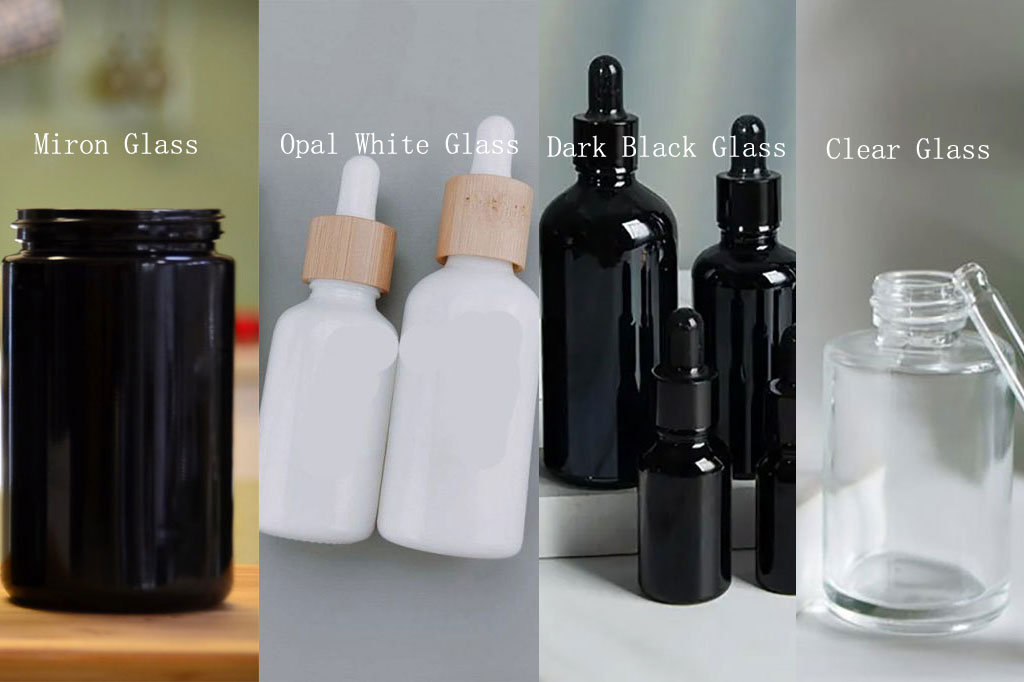The packaging a business uses can make or break its success in the competitive skincare and cosmetics market of today. Cream bottles, in particular, play a crucial role in defining how a product is perceived — from its aesthetic appeal and functional usability to its sustainability and cost efficiency. For businesses purchasing cream bottles wholesale, understanding the differences between plastic, glass, and acrylic packaging options is essential. Each material carries its own advantages and trade-offs that influence production cost, logistics, branding, and consumer trust.
The Growing Importance of Packaging in the Skincare Industry
a simple container to an essential part of company identification, packaging has changed over time. Modern consumers no longer see a cream jar as just a vessel; they perceive it as part of the product experience. The texture of the cap, the transparency of the material, and even the sound of the lid closing contribute to brand perception. With sustainability and user convenience gaining prominence, companies sourcing cream bottles wholesale are expected to balance aesthetics with responsibility.
The global skincare packaging market has witnessed exponential growth due to increasing consumer awareness and the surge of e-commerce. As a result, more cosmetic companies are buying bottles and jars in bulk to cut costs and maintain consistent brand identity. But before committing to a supplier, understanding which material best aligns with your brand’s ethos and practical requirements is critical.
Plastic Cream Bottles
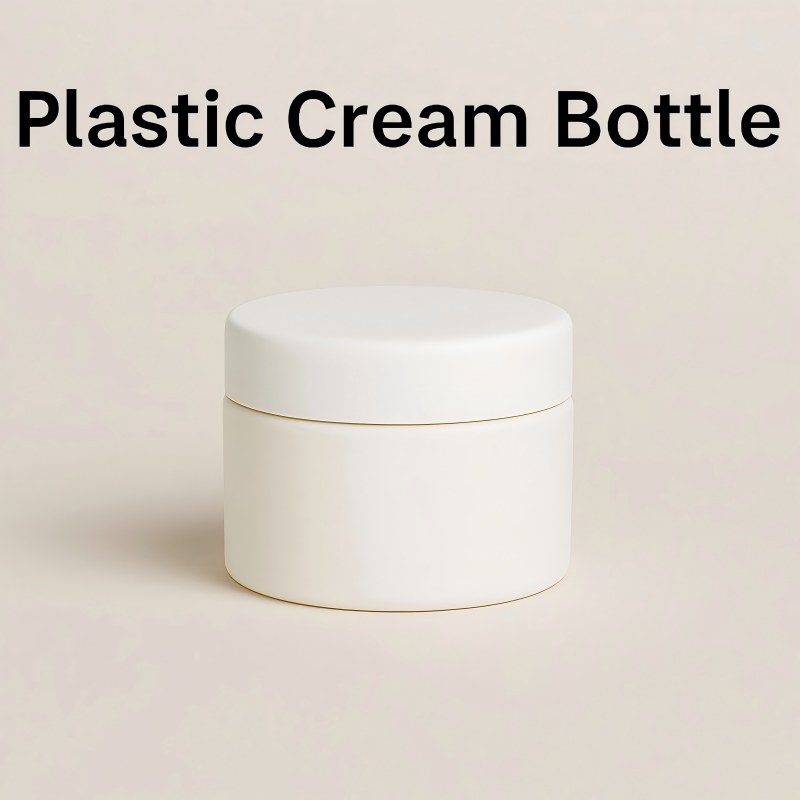
Plastic remains the most commonly used material in cream bottle production due to its affordability, flexibility in design, and light weight. The three most common polymers used to make cosmetics containers are polypropylene (PP), polyethylene (PE), and polyethylene terephthalate (PET). Their moldability allows manufacturers to produce jars in various shapes, colors, and textures, meeting a wide spectrum of brand aesthetics.
Advantages
- Affordability: For companies buying in bulk, plastic offers unbeatable cost efficiency. Manufacturing costs are significantly lower compared to glass or acrylic, and transportation is cheaper due to its light weight.
- Design Flexibility: Plastic can be molded into virtually any form — from sleek minimalist jars to intricate embossed containers — supporting both luxury and budget lines.
- Durability and Safety: Unlike glass, plastic bottles resist breakage, making them ideal for shipping and online sales where damage risk is high.
- Compatibility with Various Closures: Plastic bottles easily accommodate pumps, disc tops, and screw lids, making them adaptable for creams, lotions, and gels.
Disadvantages
- Perceived Value: Plastic packaging often conveys a less premium feel. Consumers associate plastic with mass-produced products rather than luxury formulations.
- Environmental Impact: Despite advancements in recycling, most plastic still ends up in landfills. Brands face growing pressure to shift toward recyclable or biodegradable alternatives.
- Chemical Sensitivity: Certain essential oils or active ingredients can react with plastics over time, leading to degradation or contamination if the container is not properly lined.
Best Use Cases
Plastic cream bottles are ideal for mass-market products, travel-sized lines, and starter skincare brands looking to minimize costs while maintaining quality. With advancements in sustainable polymers and post-consumer recycled (PCR) plastics, even environmentally conscious brands can find suitable options within the plastic category.
Glass Cream Bottles
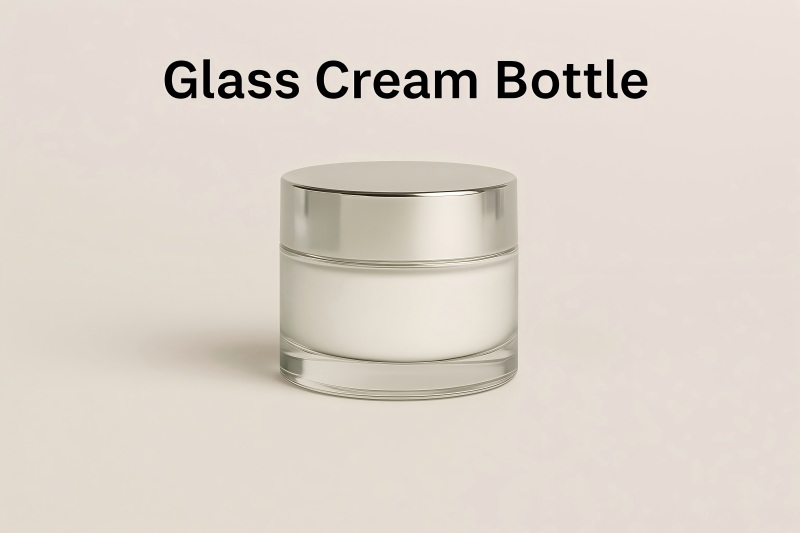
Glass exudes luxury and timelessness. It has long been favored by high-end skincare brands that wish to communicate purity, quality, and elegance. Its inert nature ensures the stability of sensitive formulations, and its weight contributes to the perception of value.
Advantages
- Premium Aesthetic Appeal: Glass communicates sophistication and trust. Its clarity highlights the product inside, appealing to customers who equate transparency with purity.
- Chemical Stability: Glass is non-reactive, which means it does not interact with the product’s ingredients. This makes it ideal for natural or organic creams containing volatile or active compounds.
- Sustainability: Glass does not lose quality when recycled forever. This aligns perfectly with the eco-friendly shift in consumer preferences.
- Temperature Resistance: Glass bottles withstand temperature changes better than plastics, ensuring product stability during transport or storage.
Disadvantages
- Weight and Fragility: The heaviness of glass adds to shipping costs, and its breakable nature increases packaging requirements.
- Higher Cost: Manufacturing and transportation costs are significantly higher, making glass less attractive for low-margin or mass-market products.
- Limited Design Flexibility: Although modern glass molding has advanced, it still offers fewer customization options than plastic or acrylic.
- Safety Concerns in Certain Markets: For travel products or children’s skincare lines, glass may pose breakage risks.
Best Use Cases
Glass cream bottles are well suited for luxury skincare brands, organic or natural product lines, and eco-conscious companies positioning themselves in the premium segment. They offer unmatched shelf appeal and align with brands that want to emphasize purity, quality, and environmental responsibility.
Acrylic Cream Bottles
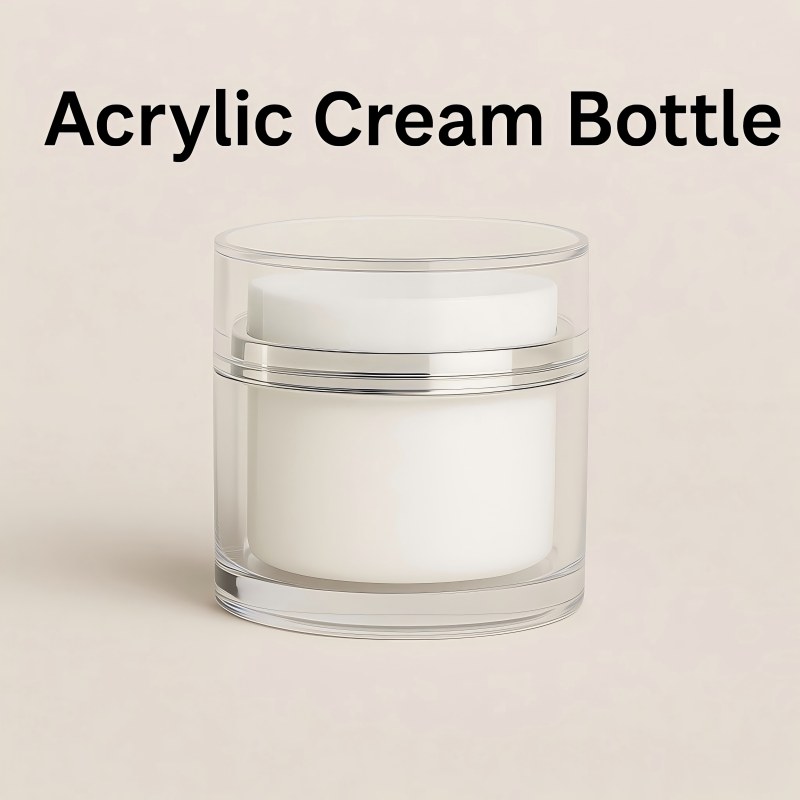
Acrylic (PMMA) represents the middle ground between plastic and glass — offering the look of glass without the fragility. It’s often used in high-end cosmetic packaging to provide a crystal-clear appearance while remaining lightweight and durable. Wholesale buyers find acrylic jars appealing because they balance elegance with practicality.
Advantages
- Aesthetic Versatility: Acrylic mimics the clarity and gloss of glass, offering a luxurious appearance suitable for prestige skincare and cosmetic lines.
- Durability: It resists shattering, which makes it safer for travel or shipping compared to glass.
- Customization Options: Acrylic can be tinted, frosted, layered, or plated with metallic finishes, allowing extensive design creativity.
- Mid-Range Pricing: While more expensive than basic plastics, acrylic is cheaper than glass, offering a good compromise for upscale yet cost-sensitive brands.
Disadvantages
- Environmental Concerns: Acrylic is not biodegradable and can be more challenging to recycle than PET or glass.
- Chemical Vulnerability: It can be scratched more easily and may turn yellow over time when exposed to UV light.
- Weight Considerations: Although lighter than glass, acrylic is heavier than plastic, slightly affecting shipping expenses.
- Heat Sensitivity: Acrylic may deform under extreme temperatures, limiting its use for certain hot-filled formulations.
Best Use Cases
Acrylic cream bottles are perfect for mid-to-high-end cosmetic lines, anti-aging products, and boutique skincare brands that prioritize appearance and shelf presence. The material allows brands to achieve a premium image without incurring the high costs of glass packaging.
Side-by-Side Comparison
To make the selection process easier, the table below summarizes key performance indicators across plastic, glass, and acrylic cream bottles:
| Feature | Plastic | Glass | Acrylic |
| Cost Efficiency | Most affordable | Expensive | Moderate |
| Weight | Very light | Heavy | Medium |
| Durability | High (unbreakable) | Low (fragile) | High (shatter-resistant) |
| Aesthetic Appeal | Moderate | Excellent | Excellent |
| Recyclability | Moderate (depends on type) | Excellent | Low-to-Moderate |
| Chemical Resistance | Good (with liner) | Excellent | Moderate |
| Customization Options | Excellent | Fair | Excellent |
| Eco-Friendliness | Moderate (improving) | High | Low |
| Best For | Mass market | Luxury brands | Mid-range and prestige lines |
Supply Chain and Wholesale Considerations
One factor to consider when sourcing cream bottles wholesale is the cost per unit. A brand must evaluate logistical and operational aspects that influence overall profitability and efficiency.
Minimum Order Quantity (MOQ)
Manufacturers typically set MOQs depending on the material. Plastic suppliers often offer lower minimums (e.g., 1,000–3,000 units) compared to glass or acrylic producers, who may require 5,000 units or more. This difference can significantly affect small businesses and startup brands managing limited capital.
Lead Times
Plastic bottles can be produced quickly due to faster molding cycles, while glass and acrylic containers require longer manufacturing and cooling processes. For seasonal product launches or time-sensitive campaigns, plastic offers faster turnaround.
Shipping and Storage
Due to its lightness, plastic minimizes freight costs and warehouse handling. Glass, however, demands reinforced packaging and climate control to prevent temperature-induced cracking. Acrylic sits comfortably between the two, requiring moderate care during transport.
Customization and Branding
Each material offers unique decoration possibilities:
- Plastic: Supports silk-screen printing, hot stamping, and label wrapping.
- Glass: Accepts etching, frosted finishes, and metallic coatings.
- Acrylic: Can integrate double-wall designs that showcase luxurious depth.
Brands should coordinate with their suppliers to match printing technology with the container’s surface properties.
Market Trends Influencing Material Choice
Sustainability and the Green Movement
Eco-friendly packaging has shifted from a marketing tactic to a consumer expectation. Brands run the risk of alienating younger consumers if they ignore sustainability. Brands run the risk of alienating younger consumers if they ignore sustainability. As a result, many companies that once relied exclusively on plastic are now turning to PCR plastics or recyclable glass.
While acrylic presents recycling challenges, its visual elegance remains in demand, particularly for prestige products. Some manufacturers are exploring bio-based acrylics and reclaimed composites to align with sustainability goals.
E-Commerce and Durability Demands
With online beauty sales booming, packaging durability has become paramount. Brands must ensure products survive long shipping distances without leaks or damage. Plastic and acrylic, being resilient and lightweight, have gained traction for e-commerce-oriented lines.
Minimalist and Transparent Designs
Consumer preferences are moving toward simple, transparent packaging that communicates honesty. Glass and acrylic containers excel in this area due to their clarity, while plastic bottles are improving with advanced resin technologies that mimic glass transparency.
Refillable Systems and Reusability
Refillable packaging is an emerging innovation in cream containers. Glass jars paired with inner plastic or aluminum refills reduce waste while maintaining a premium look. Some suppliers now offer wholesale refill systems, allowing brands to meet environmental targets and appeal to sustainability-driven consumers.
Cost Analysis
When purchasing cream bottles wholesale, understanding total cost of ownership helps businesses plan effectively. The following table compares approximate cost factors for a standard 50ml cream jar.
| Cost Component | Plastic (PP/PET) | Glass | Acrylic (PMMA) |
| Production Cost per Unit (USD) | $0.20 – $0.45 | $0.70 – $1.20 | $0.50 – $0.90 |
| Printing & Decoration | $0.05 – $0.20 | $0.10 – $0.25 | $0.10 – $0.30 |
| Shipping & Handling (per 1000 units) | Low | High | Medium |
| Breakage/Waste Risk | Minimal | Moderate-High | Minimal |
| Recycling/Disposal Cost | Low | None (fully recyclable) | Moderate |
This breakdown shows that while glass may elevate perceived value, its high production and transport costs may not justify its use for every product tier. Acrylic provides a visually striking yet cost-controlled alternative, while plastic continues to dominate for cost-sensitive markets.
Branding Implications
Luxury Positioning
Glass and acrylic instantly communicate quality. The tactile weight of glass and the crystal clarity of acrylic give consumers the impression of craftsmanship and exclusivity. These resources support the premium care story for brands looking to charge higher prices.
Mass Appeal
Plastic’s affordability makes it ideal for brands targeting mass markets, drugstores, and online retail. Custom colors, matte finishes, or metallic caps can elevate plastic packaging without drastically increasing cost.
Eco-Brand Identity
As eco-branding grows, transparent communication around materials becomes vital. Businesses can emphasize recyclability and lower carbon footprints when marketing glass or PCR plastic packaging. This storytelling builds consumer trust and loyalty.
Practical Tips for Selecting the Right Material
- Define Your Brand Image: If your brand emphasizes luxury and purity, glass or acrylic fits best. For accessibility and affordability, plastic remains king.
- Analyze Product Formulation: Products containing volatile or active ingredients (e.g., vitamin C creams) benefit from glass packaging due to its inert nature.
- Consider Market Distribution: E-commerce brands should prioritize lightweight, shatterproof materials to reduce shipping issues.
- Plan for Sustainability: Look for suppliers offering recyclable plastics or glass. Explore refillable systems to minimize long-term waste.
- Factor in MOQ and Storage: Startups should begin with flexible plastic MOQs to test the market before investing in larger glass or acrylic orders.
- Collaborate with Reliable Suppliers: Partnering with experienced wholesale manufacturers ensures quality control, consistent supply, and technical support for custom designs.
Emerging Innovations in Cream Bottle Packaging
The packaging industry is not static — new technologies continue to transform how brands approach material selection.
Bio-Based Plastics
Bio-based plastics, which are made from renewable resources like corn or sugarcane, lower carbon emissions and appeal to environmentally conscious consumers. Some suppliers now offer wholesale cream jars made from PLA (polylactic acid), which decomposes under industrial composting conditions.
Smart Packaging
Acrylic and plastic containers are being embedded with QR codes or NFC chips, allowing customers to scan and verify authenticity or access product tutorials online. This integration of digital interactivity enhances consumer engagement and loyalty.
Airless Pump Systems
Airless designs, which come in acrylic or plastic, prolong the shelf life of products and prevent infection. These containers are frequently used for sensitive skincare products by brands looking to establish themselves as creative or clinical.
Dual-Chamber Jars
Acrylic jars with two compartments allow brands to sell complementary creams or serums in a single package. This trend merges convenience with premium presentation.
Case Scenarios: Matching Material to Brand Strategy
| Brand Type | Recommended Material | Rationale |
| Luxury Organic Skincare | Glass | Communicates purity and sustainability; compatible with natural formulations. |
| Mid-Range Anti-Aging Line | Acrylic | Delivers premium appearance at controlled cost; supports advanced decoration. |
| Mass-Market Daily Moisturizer | Plastic | Lightweight, affordable, and versatile for large-scale production. |
| Eco-Conscious Start-Up | PCR Plastic or Glass | Reinforces green values; supports refillable concepts. |
| Travel or Sample Kits | Plastic | Durable, safe, and inexpensive for distribution or online sampling. |
Global Wholesale Sourcing Landscape
Wholesale cream bottle sourcing has become increasingly international. Asian manufacturing hubs — particularly China, South Korea, and Vietnam — dominate due to advanced production capabilities and cost efficiency. European suppliers, on the other hand, are known for precision and design innovation, often catering to luxury clients.
When choosing a wholesale partner, brands should assess:
- Manufacturing Standards: Ensure compliance with ISO or GMP certification.
- Material Authenticity: Verify resin origin and recycling grades.
- Customization Services: Evaluate print quality, color matching, and mold design.
- Logistics Support: Prefer suppliers with robust export experience and reliable shipping partners.
Building long-term relationships with manufacturers enables better pricing, consistent quality, and smoother product rollouts.
The Consumer Perspective
Ultimately, the success of any packaging choice depends on how consumers perceive and interact with it. Studies show that buyers often associate weight and transparency with quality, while sustainability increasingly influences purchasing decisions. Glass satisfies both perception and performance but may alienate cost-conscious buyers. Plastic appeals to practicality and affordability, while acrylic satisfies the desire for luxury aesthetics without the drawbacks of fragility.
The sensory experience — how the jar feels, opens, and displays — also affects repurchase rates. Brands investing in thoughtful packaging often find it pays off in customer loyalty and social media visibility.
The Future Outlook of Cream Bottle Packaging
The next decade of cosmetic packaging will likely be defined by hybrid materials and circular-economy systems. Manufacturers are developing recycled glass composites, lightweight hybrid acrylic-PET blends, and plant-based resins that merge sustainability with style. Automation in labeling and filling lines will further streamline large-scale wholesale operations.
Moreover, customization will become more accessible. Even small brands will be able to create signature shapes and surface finishes through digital molding technologies, closing the gap between artisanal and industrial design.

